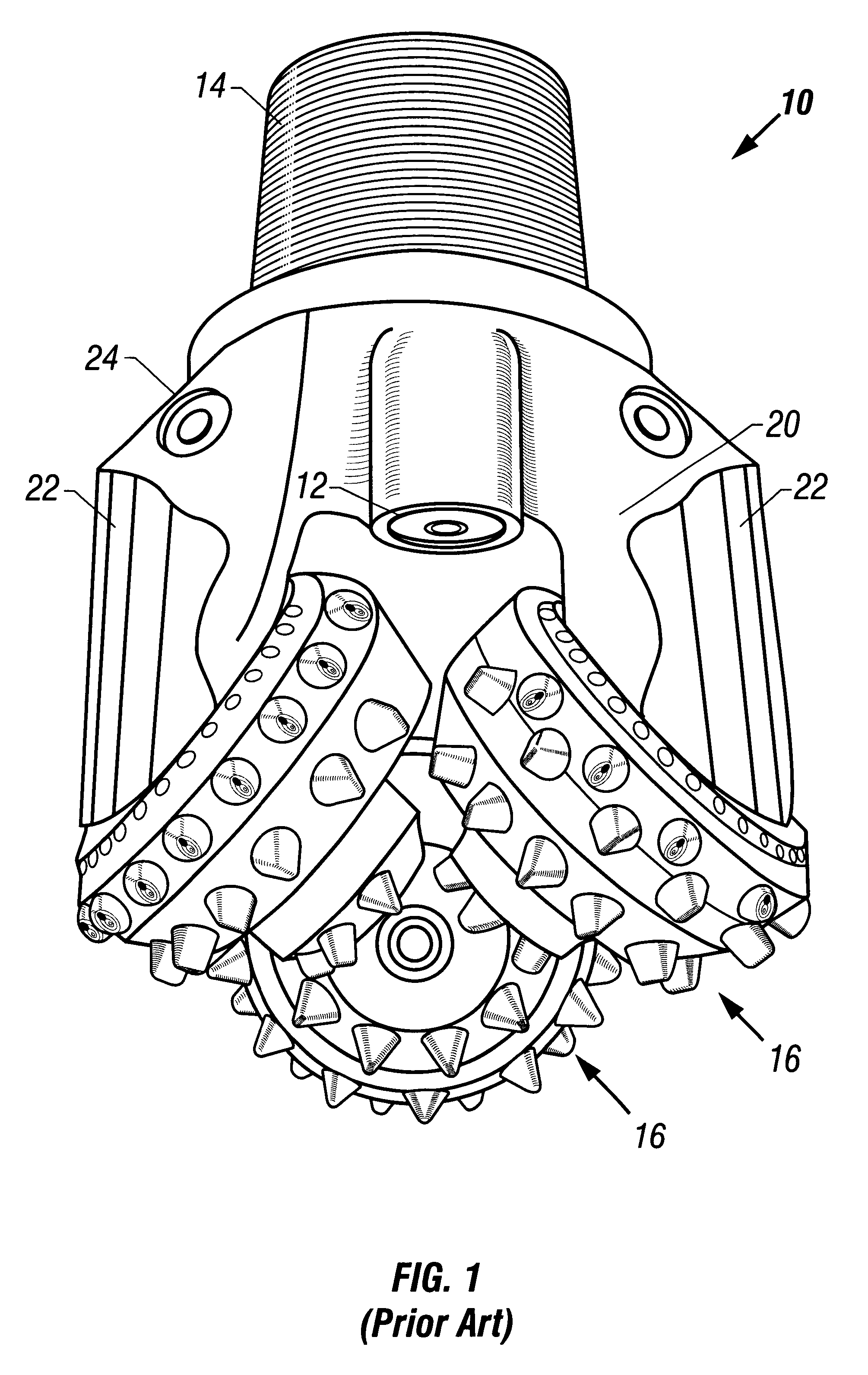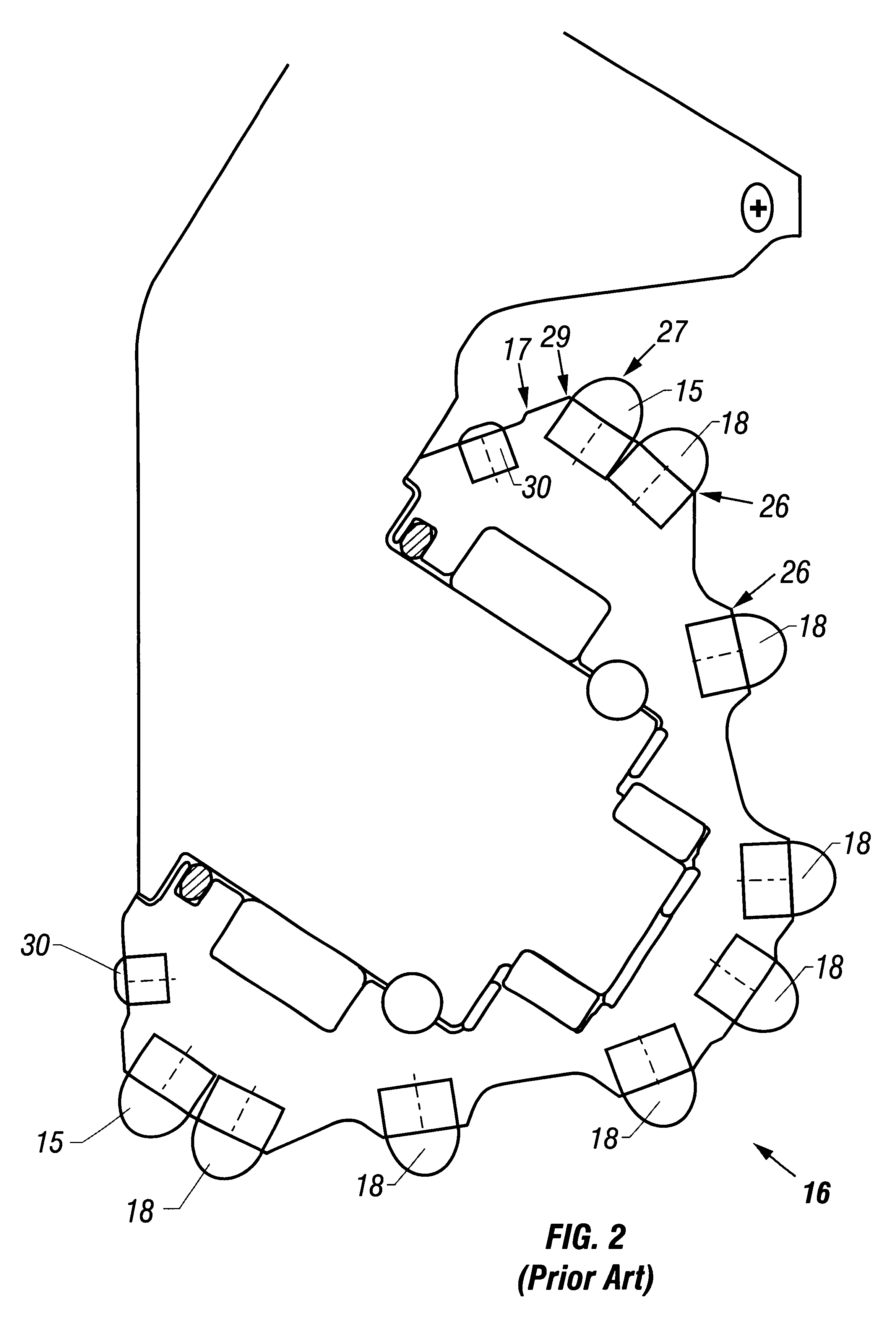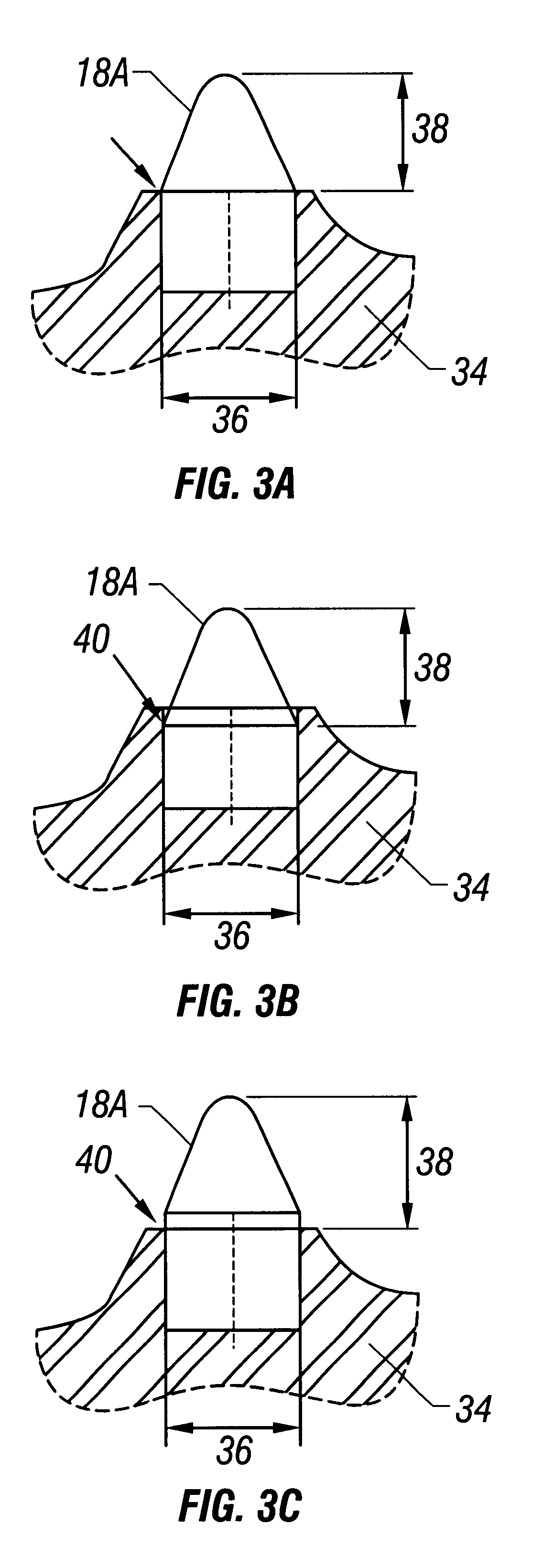Earth-boring bit having cobalt/tungsten carbide inserts
a technology of tungsten carbide and inserts, which is applied in earth drilling and mining, metal-working equipment, construction, etc., can solve the problems of reducing the lifetime of drill bits, reducing the life of drill bits, so as to reduce thermally-induced stress, reduce distortion, and reduce the effect of thermal damag
- Summary
- Abstract
- Description
- Claims
- Application Information
AI Technical Summary
Benefits of technology
Problems solved by technology
Method used
Image
Examples
example 2
This example shows that carbides of a thermally-improved grade have better wear resistance than ones of a conventional grade with equivalent toughness. Wear resistance can be determined by several ASTM standard test methods. It has been found that the ASTM B611 correlates well with field performance in terms of relative insert wear life time.
The test was conducted in an abrasion wear test machine which had a vessel suitable for holding an abrasive slurry and a wheel made of annealed steel which rotated in the center of the vessel at about 100 RPM. The direction of rotation was from the slurry to the specimen. Four curved vanes were affixed to either side of the wheel to agitate and mix the slurry and to propel it towards a specimen. The testing procedure is briefly described as follows: a test specimen with at least a 3 / 16-inch thickness and a surface area large enough so that the wear would be confined within its edges was prepared; the specimen was weighed on a balance and its den...
example 3
This example indicates that carbides of a thermally-improved grade have higher hardness than ones of a conventional grade with similar toughness. Hardness is determined by the Rockwell A scale. It is known that hardness correlates with wear resistance.
Table 4 summarizes the testing results. Samples of conventional grades and thermally-improved grades were tested according to the standard procedure. It is noted that carbide with 5 .mu.m WC / 8% cobalt has hardness similar to a conventional grade with 4 .mu.m WC / 11% cobalt. These two kinds of carbide have similar impact strength. This is also true for a thermally-improved grade with 6 .mu.m WC / 6% cobalt. On the other hand, a thermally-improved grade of 4 .mu.m WC / 6% cobalt has a higher hardness than its equivalent conventional grade (i.e., 3 .mu.m WC / 11% cobalt). Similarly, a thermally-improved grade using 6 .mu.m WC / 8% cobalt is harder than a conventional grade with 5 .mu.m WC / 10% cobalt, although they have similar impact strength.
Thes...
example 4
This example shows that the 406 grade resulted in about a 60% increase in total rock bit life with no loss in drilling efficiency. A 77 / 8" diameter three-cone rotary rock bit was constructed using the 311 conventional grade for drill medium hardness formations. The rock formation being drilled consisted of compacted sandstone with large grain nodules. This rock bit achieved an average life of 40 hours and produced 5200 feet of drilling distance. The bit exhibited a dull condition with severe wear on all gage inserts. Consequently, the drill bit was discarded.
In contrast, a series of five test bits using the 406 thermally-improved grade in the gage inserts were run at the same location. The bits achieved a median life of about 63 hours and a drilling distance of about 8200 feet. This was approximately a 60% increase in total rock bit life without a decrease in drilling efficiency.
PUM
| Property | Measurement | Unit |
|---|---|---|
| grain size | aaaaa | aaaaa |
| grain sizes | aaaaa | aaaaa |
| grain sizes | aaaaa | aaaaa |
Abstract
Description
Claims
Application Information
 Login to View More
Login to View More - R&D
- Intellectual Property
- Life Sciences
- Materials
- Tech Scout
- Unparalleled Data Quality
- Higher Quality Content
- 60% Fewer Hallucinations
Browse by: Latest US Patents, China's latest patents, Technical Efficacy Thesaurus, Application Domain, Technology Topic, Popular Technical Reports.
© 2025 PatSnap. All rights reserved.Legal|Privacy policy|Modern Slavery Act Transparency Statement|Sitemap|About US| Contact US: help@patsnap.com



